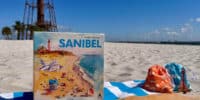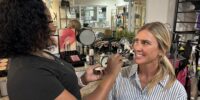Commonly Found Shells on Sanibel Island
Walking along any beach, you are bound to find a handful of shells, but walking along a Sanibel Island beach you are destined to find dozens of different species of shells. There are over 250 specific shells that call Sanibel Island their home and many are commonly found washed up along the shore. The list below highlights just a few of the many fascinating shells!
*Reminder: Please only collect shells that are not currently inhabited.
Scallops
Scallops come in all sorts of shapes, sizes, and colors. Typically, a scallop can live up to 20 years. Scallops enjoy saltwater environments and like to attach to beds of seagrass or rocks. Their crazy relative is the oyster!
Fighting Conch
The Conch shell is rumored to carry the sound of the crashing waves as one puts it up to his or her ear! Fun fact, what you are truly hearing is the sound of your own pulse. Conchs have a very interesting way of getting around. As opposed to swimming, they throw their bodies forward using their strong legs to lift themselves up. Conchs are very social creatures and like to congregate.
Lightning Whelk
This species of shell likes to steer clear of Sea Turtles and Blue Crabs because if they aren’t careful, they might be eaten! Lightning Whelks are a particular type of shell that require an optimum water temperature of 77-82 degrees Fahrenheit, or else they will slow their feeding rates and crawl at a much slower speed. This type of shell is easy to recognize because of the brownish orange stripes shaped like lightning bolts on young shells, and the spiral that grows leftwards on adults.
Nutmeg
If you know what the nutmeg seed looks like, the shape of this type of shell is not far from it. Nutmegs are only about 1-2 inches long and rock solid. They have a cross ribbed texture with an assortment of vibrant orange-brown dots on a solid white base color. There are several hundred species around the world, but Nutmegs only like tropical seas.
Banded Tulips
Banded Tulips are not delicate flowers, they are slow and aggressive carnivores. They have seven distinct brown lines and take on a swirl shape. The indents between swirls are smooth, unlike its relative the True Tulip, which has ridged indents. Banded Tulips like to rest in sandy or muddy bottoms before they pounce on their next prey.
Challenge yourself to create a collection of all these commonly found shells on Sanibel Island! Are you up for the challenge? Book your next shelling adventure at Sundial Beach Resort and Spa to find out.










